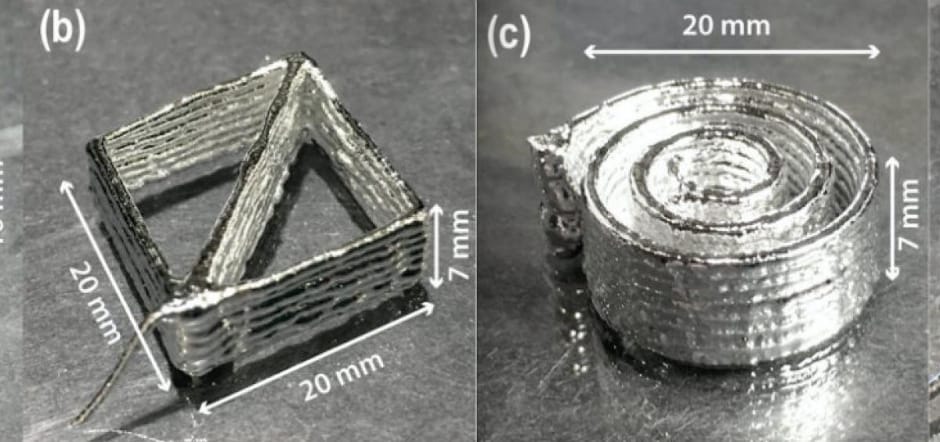
According to researchers at Oregon State University's College of Engineering, vertical structures are difficult to print with a liquid metal due to the low viscosity and high surface tension of the gallium alloy.
The team in the college's Collaborative Robotics and Intelligent Systems Institute put nickel nanoparticles into galinstan, a liquid metal alloy, to thicken it into a paste with a consistency suitable for additive manufacturing. According to the team, the resulting rheological modification of the liquid metal to a paste ‘drastically increases the fluidic elastic modulus and yield stress, rendering it 3D printable’. Their findings have been published in Advanced Materials Technologies.
"The runny alloy was impossible to layer into tall structures," said Yigit Mengüç, assistant professor of mechanical engineering and co-corresponding author on the study. "With the paste-like texture, it can be layered while maintaining its capacity to flow, and to stretch inside of rubber tubes. We demonstrated the potential of our discovery by 3D printing a very stretchy two-layered circuit whose layers weave in and out of each other without touching."
Gallium alloys have a number of favourable properties including low toxicity and good conductivity. They’re also inexpensive and self-healing and are in use as the conductive material in flexible electronics.
Prior to OSU’s modification, which used sonication to agitate the nickel particles and the oxidised gallium into the liquid metal, the alloys' printability was restricted to 2D shapes. For this study, researchers printed structures up to 10mm high and 20mm wide.
"Liquid metal printing is integral to the flexible electronics field," said co-author Doğan Yirmibeşoğlu, a robotics Ph.D. student at OSU. "Additive manufacturing enables fast fabrication of intricate designs and circuitry."
The field features a range of products including electrically conductive textiles; bendable displays; sensors for torque, pressure and other types of strain; wearable sensor suits, such as those used in the development of video games; antennae; and biomedical sensors.
"The future is very bright," Yirmibeşoğlu said. "It's easy to imagine making soft robots that are ready for operation, that will just walk out of the printer."
The gallium alloy paste is said to demonstrate several features new to the field of flexible, stretchable electronics, added co-corresponding author Uranbileg Daalkhaijav, Ph.D. candidate in chemical engineering.
"It can be made easily and quickly," Daalkhaijav said. "The structural change is permanent, the electrical properties of the paste are comparable to pure liquid metal, and the paste retains self-healing characteristics."
Future work will explore the exact structure of the paste, how the nickel particles are stabilised, and how the structure changes as the paste ages.





April 1886: the Brunkebergs tunnel
First ever example of a ground source heat pump?